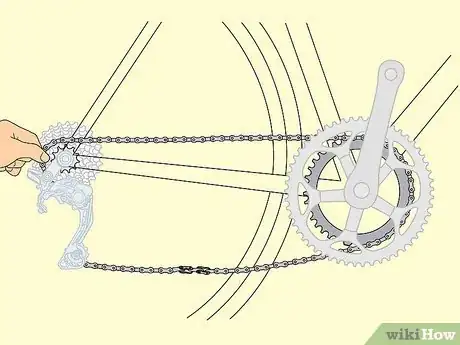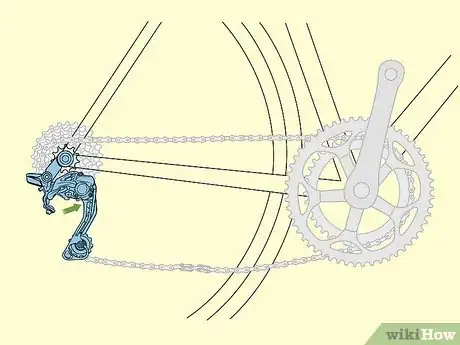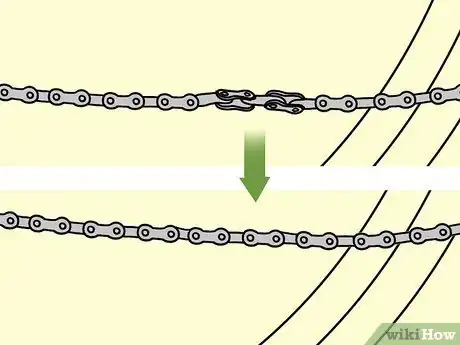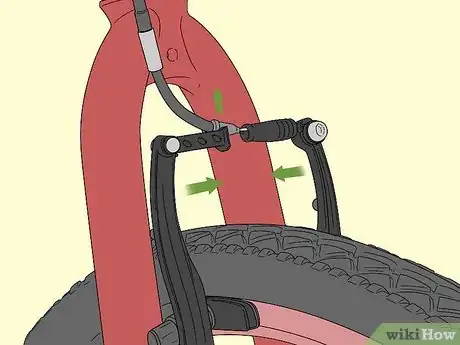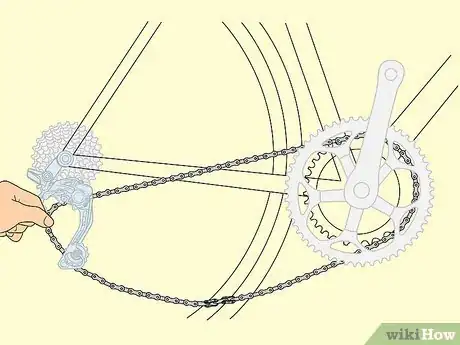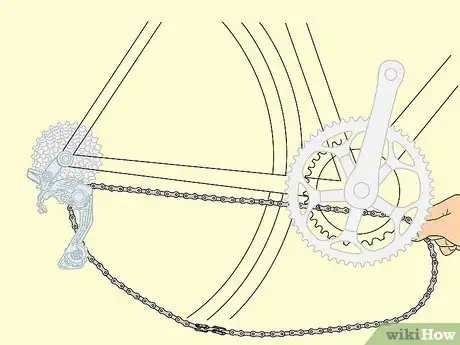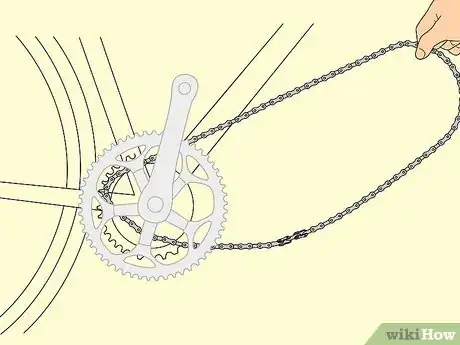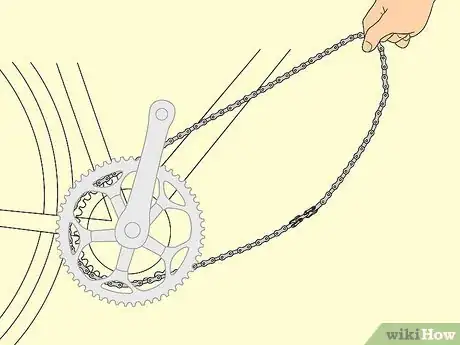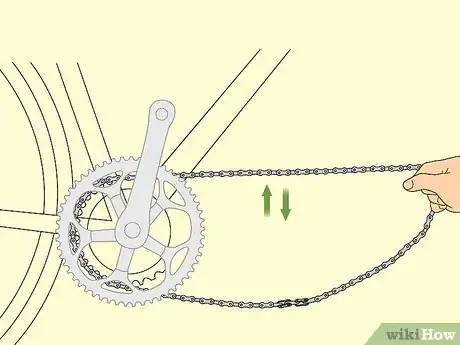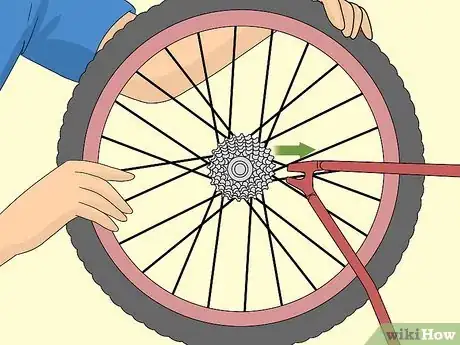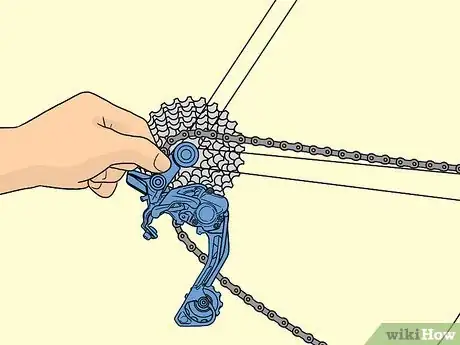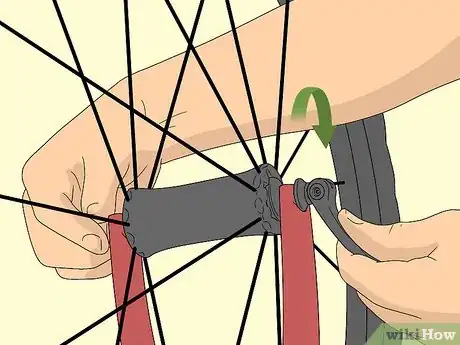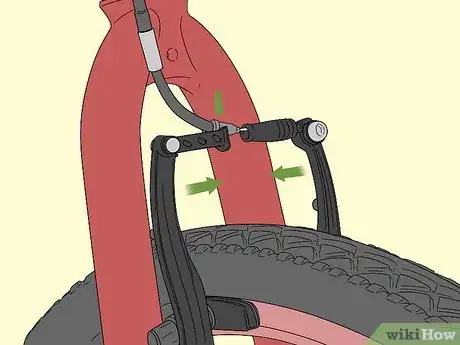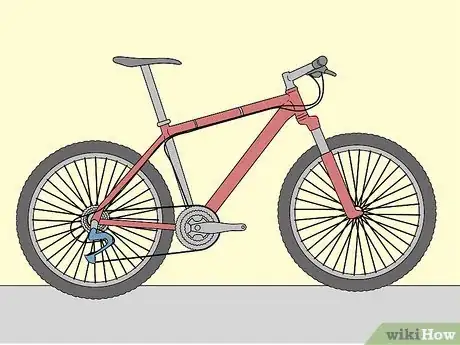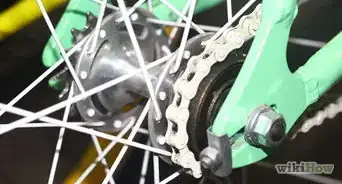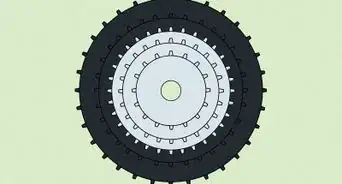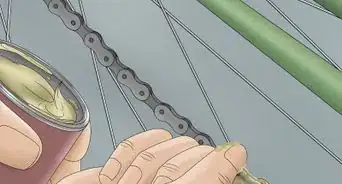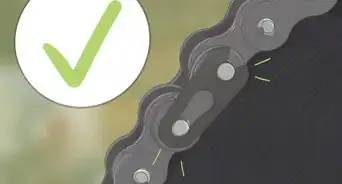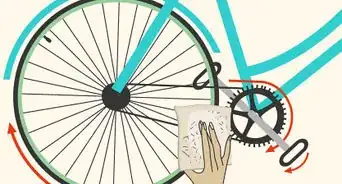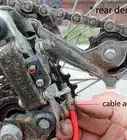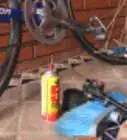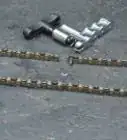This article was co-authored by Ikaika Cox. Ikaika Cox is the Shop Director at the Salt Lake City branch Bicycle Collective in Salt Lake City, Utah. He has been a bike mechanic since 2012, beginning as a volunteer with the Provo Bicycle Collective, and growing and honing his skills as a bicycle mechanic and educator in multiple Bicycle Collective locations over the years. He now leads the Salt Lake City branch of the Bicycle Collective.
There are 9 references cited in this article, which can be found at the bottom of the page.
This article has been viewed 50,476 times.
Tangled bike chains are one of the most common problems that cyclists face. But while a tangled chain may seem like a big deal to you, the process of fixing it is relatively simple. To untangle your chain, you can try to put enough slack in it so you can untwist it. If this doesn't work, you can remove your rear wheel, slide the chain off the sprockets, and shake the chain until it becomes untangled. Ultimately, all you need is some time and patience and you'll be cycling in no time.
Steps
Creating Slack in the Chain and Untangling
-
1Slide the chain onto the smallest sprockets. Sprockets are the metal plates with teeth that move the chain. Since you won't be able to ride the bike, you'll have to move the sprockets manually. To do this, simply lift the chain and move it to the smallest sprocket. Do this on both the rear and front chain sets.[1]
-
2Compress the derailleur to get extra slack in the chain. The derailleur is a mechanism that guides the chain and hangs off the rear chain set. It is made of plastic and metal and looks like an incomplete hook. Push the derailleur inward and hold it there. This should put a little extra slack in your chain.[2]Advertisement
-
3Untwist and untangle the chain. After you've put slack in the chain, you need to manually untangle the chain with your hands. Think of the chain as a jumbled series of loop-de-loops and examine how the chain has become tangled. Try to work backward to untangle it and be careful not to twist too hard.
- The more slack in your chain, the easier it will be to untangle it.
- Be careful not to create more tangles or twists in your chain.[3]
- Note that if the chain is twisted against the axis it moves along and the plates get bent, they cannot be straightened.
Removing the Rear Wheel to Access the Chain
-
1Flip the bike. Before you fix your tangled chain, you'll need to flip your bike. This will help keep your bike steady as you untangle the chain. In addition, the chain will be higher and easier to access.
- Make sure you are on a flat surface.
- Position the bike so the handle bars are perpendicular to the body of the bike.
- If you're worried about scratching your bike, place a towel underneath it.[4]
-
2Release and unscrew the back wheel skewer. The skewer is a long piece that slides into holes in the rear of the bike's body and through the center of the wheel. Locate the knob of the wheel's skewer. Flip the lever and rotate the knob counterclockwise. At the same time, hold the fastener on the other side of the skewer. After several turns, the skewer should come lose from the fastener.[5]
- Before loosening the skewer, you may need to pull or push a pin that will enable you to turn it.
-
3Unhook the bike brake. Locate the thin steel wire that connects the brake cable housing and the rubber brake pads. Then, loosen the lever on the caliper so that the brake opens enough for the wheel to slide out of it. On some bikes, you may need a flathead screw driver to loosen the caliper.[6]
- You may be able to simply unhook the brake cable, thus releasing the brake.
-
4Slide the chain off the back chain set. The back chain set encompasses the sprockets on the back wheel of the bike. Depending on the type of bike, there may be a different number of sprockets. To remove the chain, gently pull the chain off the back chain set. When you have some slack in the chain, slide it over and off the chain set.[7]
-
5Remove the chain from the main chain set. These are the main sprockets that power your bike. They are attached to the pedals of your bike. To remove the chain from the chain set, gently pull and lift it off. You may need to use both hands to lift both sides of the chain where it sits on the chain set.
- If you have a derailleur – a device attached to the rear portion of the body of the bike – you may have move it forward and pull the chain a little bit harder to get enough slack to remove it.[8]
Shaking the Chain to Fix it
-
1Slide the chain up the body of the bike to behind the pedals. Although you removed the back wheel and separated the chain from the chain set, it will still be attached to your bike. Before you try to untangle chain, you need to move it toward the back of the bike, where you can try to untangle it free from the obstruction of the pedals and the chain set.[9]
-
2Hold the longest part of the chain with one hand. This is the part that is not tangled. Do this carefully, as you don't want to further tangle the chain. As you grab the chain, you should move it upward so the tangles are below the untangled part of the chain.[10]
-
3Straighten the chain. Once the tangles are hanging below the untangled portion of the chain, straighten the chain as much as you can. You may be able to partially untangle some of the chain by pushing the tangle in on itself. Be careful though, and avoid making the tangles worse.[11]
-
4Shake the chain. After you've straightened the chain, hold the untangled (top) portion of the chain and begin to shake it vigorously up and down. As you do this, the chain should begin to untangle. Shake your chain for up to a minute.[12]
- Repeat shaking the chain as needed.
- After some shaking, you may be able to untangle the rest of the chain by twisting or turning it.
Reinstalling the Wheel
-
1Sit the wheel back onto the body of the bike. Gently place the middle cylindrical part of the wheel into the wheel housing – the half circle slots you removed it from. The center of the wheel should rest snuggly into the housing. Push the wheel to see if it spins as it should. If it doesn't, readjust the center of the wheel so it fits snugly.
-
2Slide the bottom side of the chain onto the smallest sprocket of the chain set. The smallest sprocket should be the one closest to the inside of the bike. Make sure the chain fits onto each of the teeth of sprocket. If the chain doesn't sit right, it could get tangled again.[13]
-
3Pull the other side of the chain onto the back wheel chain set. Much like putting the chain on the main chain set, you'll need to gently slip the chain onto the rear chain set. Again, place the chain on the smallest sprocket.[14]
- If you have a derailleur, you may need to compress it to get more slack.
-
4Secure the wheel skewer. Slowly guide the wheel skewer through the center cylinder of the rear wheel. Once it is in, place the fastener on the far side of the skewer. Hold the fastener and turn the skewer clockwise until it is tight.
- Try to remove the tire from the body of the bicycle. If it comes off the bike, you haven't secured it properly. Verify that you guided the skewer through the half circle portion of the bike's wheel housing and through the wheel itself.
-
5Reconnect the brake. Pull the thin metal brake thread tight until your brake pads are almost touching the rim of the bike. Depending on the type of brake system you have, you may need to screw a caliper to tighten the brake or unclasp the brake line itself.
- You may need to readjust your brakes after you've reattached your bike. Simply tighten or loosen your bakes until you're comfortable with how they work.[15]
-
6Flip the bike and check to see you've reattached everything. After you've reconnected your brakes, you should turn your bike over and move it around to make sure it works properly. You may need to pedal slowly around a small space to test it out. When testing your bike:
- Make sure your chain is on the teeth of the sprockets. If you have a multiple speed bike, you may need to move through a couple speeds to see if it shifts properly.
- Test your brakes before you go too fast.
- Recheck the wheel skewer to make sure it stays tight.
References
- ↑ https://inl.org/cycling/advice/gearing/
- ↑ https://www.evanscycles.com/coffeestop/advice/diy-gear-adjustment-what-you-need-to-know
- ↑ https://www.sheldonbrown.com/derailer-adjustment.html
- ↑ https://www.liv-cycling.com/global/campaigns/removing-and-reinstalling-a-bike-wheel-for-transport/19059
- ↑ https://www.liv-cycling.com/global/campaigns/removing-and-reinstalling-a-bike-wheel-for-transport/19059
- ↑ https://www.liv-cycling.com/global/campaigns/removing-and-reinstalling-a-bike-wheel-for-transport/19059
- ↑ http://wheelworld.com/articles/removing-rear-wheels-is-easy-pg191.htm
- ↑ http://www.parktool.com/blog/repair-help/#article-section-4
- ↑ http://ourpastimes.com/untwist-bike-chain-2299549.html
- ↑ http://ourpastimes.com/untwist-bike-chain-2299549.html
- ↑ http://ourpastimes.com/untwist-bike-chain-2299549.html
- ↑ http://ourpastimes.com/untwist-bike-chain-2299549.html
- ↑ https://www.globalcyclingnetwork.com/video/how-to-untangle-a-bike-chain
- ↑ https://www.globalcyclingnetwork.com/video/how-to-untangle-a-bike-chain
- ↑ https://www.cyclescheme.co.uk/community/how-to/how-to-adjust-your-brakes
